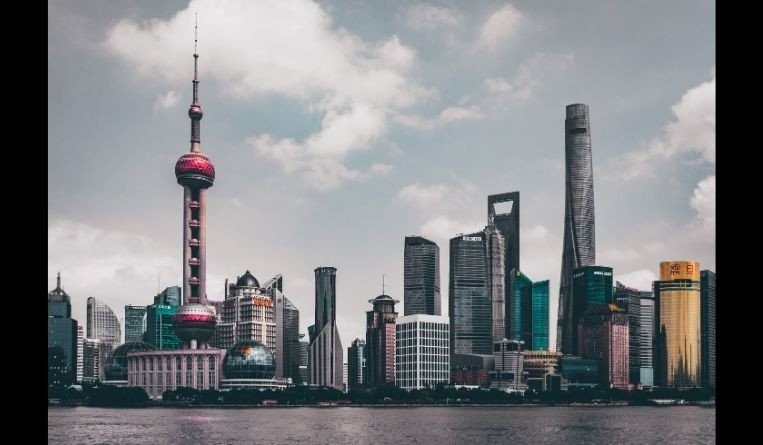Ten years after its last revision, the new (third) revision of the Copyright Law of the People’s Republic of China was completed on November 11, 2020, and will come into effect from June 1, 2021. The new revision of the copyright law has made great modifications, including the scope of works, the ownership of copyright, the content of copyright, the restriction of copyright, copyright-related rights, copyright infringement and legal relief. In general, this revision responds to the requirements of technological and social development, especially the revision of the content of rights and the increase of punitive damages, which can provide rights holders with more comprehensive protection. Also, more attention needs to be paid to avoid infringement risks.
For cultural and entertainment enterprises, the significant impacts from the revision are mainly as follows:
Modifications to the types of works: Expanding the scope of works
In this revision of the copyright law, “cinematographic works, TV drama works and other audio-visual works” and “cinematographic works and works created by virtue of the analogous method of film production” have been renamed as “audio-visual works”. This change reflects the challenges brought to the copyright law by the rapid development of the industry. For example, since the annual revenue of the online gaming industry exceeds hundreds of billions of yuan, that industry brings more and more problems into being, including:
- How to determine the nature of live broadcasts and online game live screens;
- How to protect them; and
- Whether other objects, like music fountains, lighting shows and fireworks shows, can be protected by copyright law?
The emergence of these problems has given birth to the legislation of audio-visual works.
In fact, the scope of audio-visual works far exceeds that of cinematographic works and works created by virtue of the analogous method of film production. Video clips, which are currently popular, will also be deemed as such kind of works.
The ownership of audio-visual works is another issue worth discussing. Article 17 of the new copyright law stipulates that the copyright ownership of audio-visual works other than cinematographic works and television drama works shall be agreed upon by the parties. Where there is no agreement or the agreement is unclear, the producer shall own the work. However, in practice, the “producers” here may encounter the same problems as the producers of cinematographic works and television drama works. That is, how to identify who is the actual producer. This problem needs to be further clarified in judicial practice.
The new copyright law not only enumerates the types of works, but also creates an open system for the scope of works. That is, at the end of Article 3, it stipulates that “other intellectual achievements that meet the characteristics of the work” as the miscellaneous provision. This modification means that in future judicial judgments, there will be no need for judges to attribute the object of dispute to a certain type of work reluctantly, especially when new forms of artistic expression appear. This can help to solve the problem of how to protect works such as original sports event programmes and game live screens, which has caused heated discussions in the industry.
In judicial judgments, different types of works usually mean different levels of damages, which is of great significance to enterprises. On the other hand, this modification means that the judges have greater discretion, and the attorney of the plaintiff will get more possibilities to argue. When demonstrating the basis of rights, the attorney of the plaintiff needs to combine the originality with the characteristics of audio-visual works to excavate and organize the evidence, and the process will better embody the expertise of intellectual property lawyers.
Expansion of the protection scope of broadcasting rights: The anti-infringement of live webcasts
The new copyright law has included the ubiquitous non-interactive dissemination behavior through network into the scope of broadcasting rights, from “publicly transmit or relay a work by wire and wireless” to “publicly transmit or relay a work by wire or wireless”, which expands the scope of broadcasting right protection and fills in the parts that were not covered by the information network transmission right in the past. At the same time, it is also clarified that the ways of relaying works include both by wire and wireless, and the rights of broadcast organizers are extended to the network environment. In the future, the new copyright law can regulate the relaying of sports events and various infringements in live webcasts. When a non-interactive copyright infringement occurs, for example, when copyright is infringed during a live webcast or during a said live webcast, in which a recorded content is being broadcasted, the people’s court will no longer use the “other rights” to provide relief. Instead, now the link between the right of information network transmission and broadcasting is closer, and the application of laws is clearer and more definite.
Increased damages: The cost of right protection will be fully paid
The most important thing for the copyright holders concerning the new copyright law is the addition of punitive damages clauses. It stipulates that “in the case of intentional infringement of copyright or copyright-related rights, where the case is serious, damages may be paid ranging from one to five times the amount determined pursuant to the aforesaid method”. This provision fills the gap in punitive damages of intellectual property rights in the copyright field. Also, together with PRC civil code, patent law, trademark law, and the PRC Anti-Unfair Competition Law, this provision establishes a Chinese comprehensive punitive damages system in the field of intellectual property. Of course, the copyright holder needs to be reminded that a people’s court cannot apply punitive damages according to law directly unless the right holder makes a claim before it. This also fully reflects the importance of entrusting a professional lawyer who is familiar with the practice of judicial protection of intellectual property rights and how to safeguard them.
At the same time, the new copyright law stipulates that a people’s court shall rule on statutory damages ranging from Rmb500 to Rmb5 million (US$77 to US$768,000) when there is no accurate evidence of exact damages. The breaking of the statutory damages ceiling demonstrates the increase in damages for copyright infringement. The floor of Rmb500 has never appeared in previous revisions. It mainly affects copyright cases in batch, such as the protection of pictures or fonts. Furthermore, it promotes the formation of a better environment, in which copyright and innovations are respected. This provision can also be used as a reference for the settlement amount in intellectual property mediation, providing right holders with reasonable expectations. Thus, more right holders may consider mediation as an efficient and convenient way of dispute resolutions.
It should be noted that in current copyright law, the determining factors of the amounts of damages are sequential. The actual loss of the right holder should be considered at first and the profits of the infringer will be considered after that. The new copyright law adopts “or” as a connection and gives these two factors the same position. Thus, during the process of right protection, right holders can choose a loss calculation method with more sufficient evidence, which is conducive to enhance the enthusiasm of rights holders in right protection.
Amendment (XI) to the Criminal Law of the PRC: Criminal protection of copyright has been strengthened simultaneously
Immediately after the copyright law was revised and passed, Amendment (XI) to the Criminal Law of the PRC was also announced at the end of the year, and it has come into force since March 1, 2021. In this amendment of the criminal law, the provisions related to the crime of infringing upon intellectual property rights have been substantially revised, and the criminal punishment for copyright infringement has also been increased.
Firstly, the infringement of “copyright-related rights” has been included in the scope of crime and the protection clauses for performers have been added. Secondly, the behaviour of disseminating to the public through an information network is included in the scope of the criminal law. The expression of “audio-visual works” has been adopted in accordance with the new copyright law, and the protection of fine art works has been added. Thus, the scope of copyright protection became more comprehensive. Today, when online content production is prevailing, such as video clips, live broadcast industry, and online games, the relevant pan-entertainment companies shall pay more attention to this regulation. On the one hand, for right holders, they can seek stronger criminal remedies now. On the other hand, more attention shall be paid to potential criminal compliance risks.
In addition, Amendment (XI) to the Criminal Law of the PRC takes fixed-term imprisonment as the starting point of crime sentence for the crime of infringing upon intellectual property rights (except for the crime of counterfeiting patents). The provisions concerning the imprisonment term have been changed from “not more than 3 years” to “not more than 5 years”, and from “not less than 3 years but not more than 7 years” to “not less than 3 years but not more than 10 years”, both of which increased the force of the penalty. The crime of infringing upon intellectual property rights can be sentenced to a 10-year fixed-term imprisonment, which was unimaginable in the past. This will have the effect of deterring the such crimes in the future. For cultural and entertainment enterprises, in order to avoid committing the crime of infringing upon intellectual property rights, it is necessary to focus more on criminal law compliance when designing business models.









